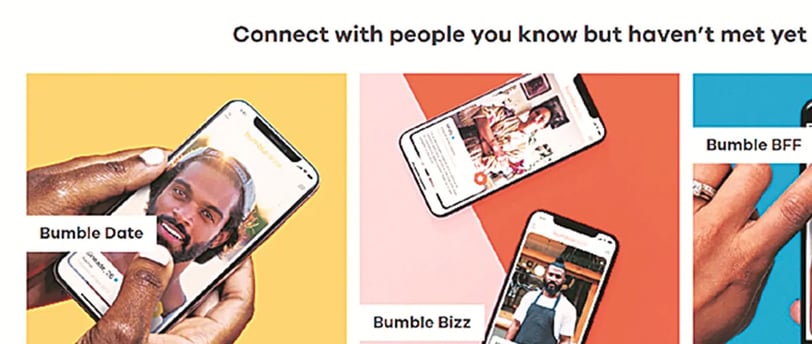Expanding Bumble’s Presence in Tier 2 Cities: Challenges and Opportunities
Discover how Bumble can expand its presence in India's Tier 2 cities by adapting to cultural nuances, overcoming technological barriers, and leveraging localized strategies. This blog explores the challenges and opportunities of tapping into these untapped markets while maintaining Bumble's progressive, women-first ethos. Dive in for insights, strategic recommendations, and a comparative analysis of the competitive landscape.
Shubhi Jain
12/13/20242 min read


Expanding Bumble’s Presence in Tier 2 Cities: Challenges and Opportunities
Introduction
The advent of dating apps has revolutionized relationships worldwide, and India is no exception. However, the Indian dating landscape varies significantly between Tier 1 and Tier 2 cities, influenced by cultural norms, digital accessibility, and urbanization levels. Bumble, a globally renowned dating app, has established itself in Tier 1 cities like Mumbai, Delhi, and Bengaluru, but its reach in Tier 2 cities remains limited despite evident demand. This blog explores how Bumble can overcome the challenges of expanding its footprint in Tier 2 cities while staying true to its progressive ethos.
The Unique Challenges of Tier 2 Cities
Cultural and Social Dynamics
Tier 2 cities in India, such as Indore, Vadodara, and Jaipur, are deeply rooted in traditional values. Here, the emphasis is on long-term relationships and community over casual dating, contrasting sharply with Tier 1 cities where individual independence often takes precedence. Bumble’s women-first approach—while empowering in urban centers—may need adjustments to resonate with more conservative mindsets.
Technological Barriers
While smartphone penetration is widespread, many Tier 2 users are unfamiliar with dating apps. Bumble’s sophisticated user interface could appear intimidating to first-time users. Simpler navigation, regional language support, and onboarding tutorials could bridge this gap.
Economic Constraints
The lower disposable incomes in Tier 2 cities mean Bumble’s premium pricing model might not attract users. A freemium model that provides selective premium features for free or at a lower cost could encourage wider adoption.
Competitor Landscape
The competition in Tier 2 cities is robust, with local players like QuackQuack and TrulyMadly tailoring their offerings to the cultural nuances of smaller cities.
Exhibit 1: Competitor Landscape
QuackQuack’s emphasis on regional languages and long-term relationship features has given it an edge. Bumble’s challenge is to align with these preferences without diluting its brand identity.
Strategic Opportunities for Bumble
Localized Features
Bumble can introduce features that cater specifically to Tier 2 users. This includes friendship-building options, support for vernacular languages, and culturally relevant content. Simplifying the user interface and incorporating tutorials could lower barriers to entry.
Brand Messaging Realignment
To connect with Tier 2 audiences, Bumble could promote its platform as a place for meaningful connections and serious relationships rather than focusing solely on casual dating. Highlighting success stories of long-term relationships fostered on the app can reinforce this positioning.
Freemium and Incentive Models
Adjusting the revenue model to include freemium options would make Bumble more accessible. Features like limited profile boosts and free compatibility insights could entice users to eventually explore premium offerings.
Collaborative Campaigns
Partnering with local influencers and hosting community-based events could build trust and drive engagement in Tier 2 cities. These initiatives could demystify online dating and position Bumble as a safe and culturally conscious platform.
Understanding User Behavior
The behavioral differences between Tier 1 and Tier 2 users are stark:
Exhibit 2: User Preferences
To succeed, Bumble must tailor its offerings to align with these preferences while maintaining its core values.
The Road Ahead
Bumble’s expansion into Tier 2 cities presents a significant growth opportunity, given the evolving digital dating market in India. With the online dating sector projected to reach $70.84 million in revenue by 2023 and 3.2 million paid users nationwide, the untapped potential in smaller cities is immense.
Exhibit 3: Dating Industry Overview (India)
By adopting localized strategies, simplifying its interface, and adjusting its revenue model, Bumble can bridge the gap between its progressive ethos and the cultural nuances of Tier 2 cities. This balanced approach will enable Bumble to establish itself as a trusted platform for meaningful relationships across diverse Indian demographics.